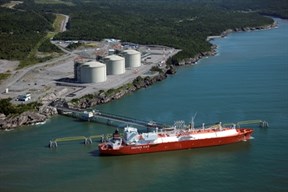As of 2021, China imports more LNG than any other country
In 2021, China imported more LNG than any other country, according to data from Global Trade Tracker and China’s General Administration of Customs. Prior to 2021, Japan had been the world’s largest LNG importer for decades, according to data from Cedigaz.

China’s LNG imports averaged 10.5 Bcf3 per day, a 19% increase compared with 2020. LNG imports accounted for more than half of China’s overall natural gas imports and 30% of China’s total natural gas supply in 2021.
China began importing LNG in 2006 and, with the exception of 2015, has imported more LNG each year since then. China has rapidly expanded its LNG import capacity, which was estimated at 13.9 Bcf/d in 2021. By the end of 2022, China’s regasification capacity could increase by 2.8 Bcf3/d to 16.7 Bcf3/d, according to data by S&P Global Platts. In 2021, China imported LNG from 25 countries. The largest six suppliers—Australia, United States, Qatar, Malaysia, Indonesia, and Russia—provided 8.9 Bcf3/d, or 85%, of China’s total LNG imports.
Since China lowered tariffs on LNG imports from the United States from 25% to 10% in 2019, U.S. LNG exports to China have increased and in 2021 averaged 1.2 Bcf3/d. The United States was the largest supplier of spot LNG volumes to China last year.
During 2022 and 2023, several new long-term contracts between China and the United States are expected to start from the Sabine Pass and Corpus Christi terminals for a combined estimated volume of up to 0.5 Bcf3/d. The new U.S. LNG export terminal at Calcasieu Pass will supply China’s two national energy companies—Sinopec with 0.13 Bcf/3d and CNOOC with 0.2 Bcf3/d—starting next year.

- ADNOC Gas awards $2.1 B in contracts to enhance LNG supply infrastructure
- U.S. Department of the Treasury releases final rules for clean hydrogen production tax credit
- Tecnimont to build waste-to-biogas plant to fuel local kitchens in India
- Indonesia regulator confirms disruption at bp's Tangguh LNG project
- Topsoe, Aramco sign JDA to advance low-carbon hydrogen solutions using eREACT™



Comments